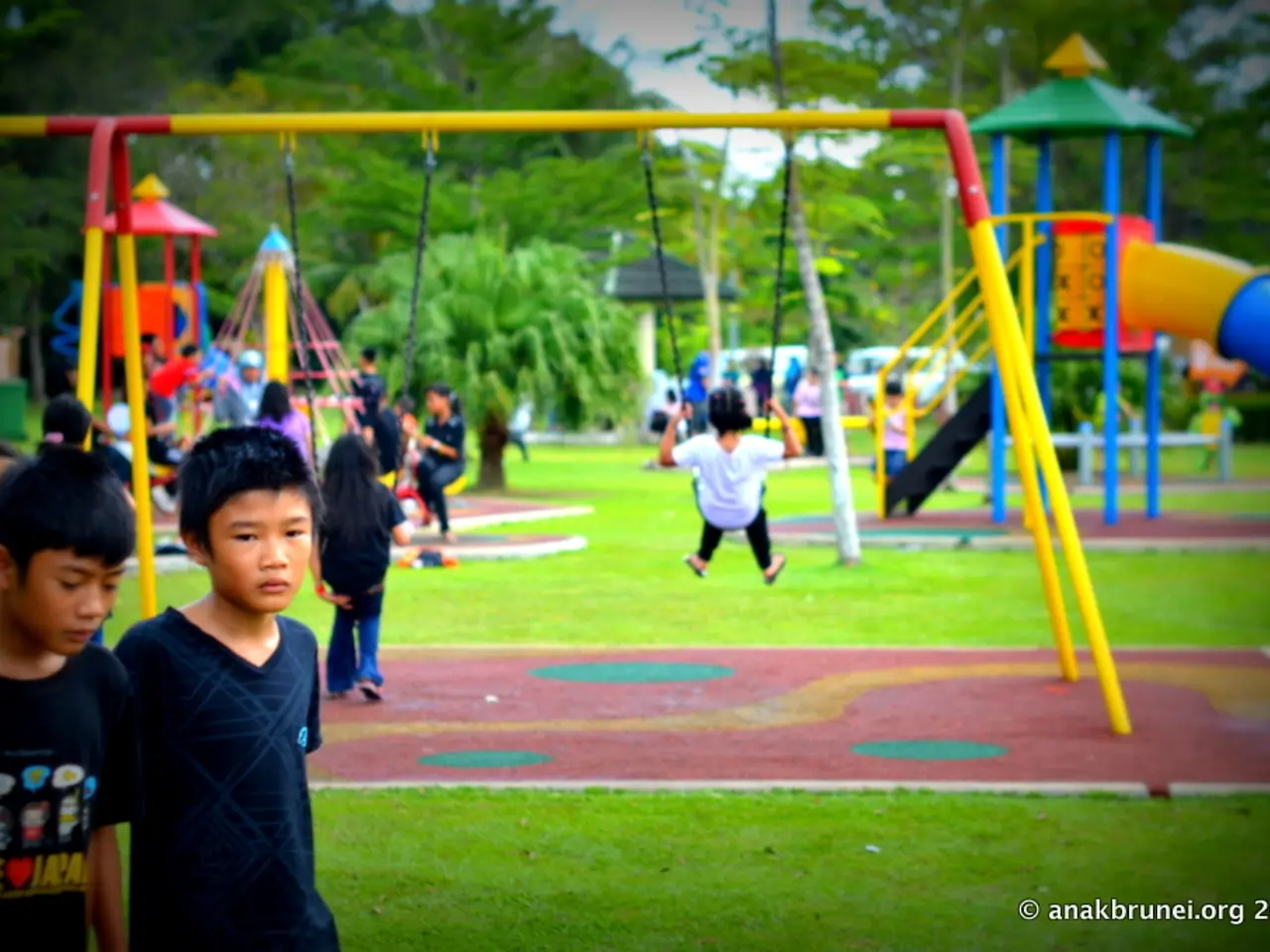Nine Strategies for Integrating Libraries' Enthusiasm into Local Parks, Encouraging Curiosity Every Day
Transforming Parks and Libraries into Immersive Outdoor Learning Environments
Innovative approaches to outdoor education are being embraced, combining technology and nature to create engaging learning experiences. From mobile learning labs and pop-up makerspaces to augmented reality trails and nature-based STEM programs, smart park features are being developed to blend digital access with physical spaces.
Environmental education stations have been established, offering visitors a chance to explore specific ecosystems, local wildlife habitats, weather patterns, and conservation efforts. Hands-on elements such as rain gauges, soil testing kits, and bird watching guides are available for a more interactive learning experience.
Interactive nature trails have been created, featuring themed learning trails, QR-coded signs linking to library resources, seasonal scavenger hunts, and tactile elements for scientific thinking and nature journaling. Safe learning zones have been designated, ensuring clear sight lines for supervision, proper lighting along pathways and learning stations, and buffer zones between active recreation areas and quiet study spaces.
Universal design features have been incorporated, making these outdoor learning spaces accessible to all. Wide, smooth pathways with gentle grades for wheelchair access, adjustable-height tables and benches, tactile learning elements, Braille signage, and interpretive panels at various heights with large print options and audio descriptions available through QR codes are just a few examples.
Outdoor science labs have been established, providing materials for conducting scientific experiments and observations. Solar-powered microscope stations, weather monitoring equipment, and investigation zones for testing water quality, soil composition, and air quality are available for hands-on learning.
Digital-physical hybrid spaces are being envisioned, with smart park features like weather-resistant touch screens embedded in park furniture, QR-coded nature trails linking to digital resources, and AI-powered virtual tutors guiding self-directed learning through outdoor exploration.
Assessing learning outcomes is being done through pre and post-activity assessments, mobile learning portfolios, gamified challenges, completion rates of educational scavenger hunts and nature-based assignments, and digital badges and achievement systems.
All-weather learning spaces have been transformed, with weather-resistant structures and materials, covered pavilions with drainage systems, weatherproof storage lockers, and UV-resistant canopies.
Libraries and parks are collaborating to create immersive outdoor learning environments by combining literacy, outdoor recreation, and educational programming in innovative ways. Book Walks or StoryWalk® paths that integrate reading with physical activity and nature exploration have been installed. Libraries are also partnering with outdoor skills instructors to offer programs teaching practical nature skills inspired by popular outdoor-themed books.
Community feedback systems are being deployed, allowing users to provide real-time reviews and suggestions through a dedicated mobile app, regular community forums, QR codes at learning stations for specific feedback, and a suggestion box system through both physical installations and digital platforms.
The goal is to create sustainable learning ecosystems that make education more accessible and benefit generations to come. This is being achieved by connecting with local library and park administrators to explore ways to transform these community assets into dynamic spaces where knowledge and nature intersect. Sustainable design solutions are being considered, including solar-powered reading pavilions, rainwater harvesting systems, weather-resistant structures built from recycled materials, green roofs, smart lighting systems, and eco-friendly infrastructure.
These strategies create dynamic, immersive environments where libraries and parks jointly foster literacy, environmental awareness, and active learning.
Programming can be incorporated into these immersive outdoor learning environments with AI-powered virtual tutors, guiding self-directed learning through outdoor exploration.
These collaborative spaces could also cater to e-learning, as digital resources can be linked to QR-coded nature trails, providing access to educational content in the home-and-garden setting.
Furthermore, technology can play a role in fostering education-and-self-development, as digital badges and achievement systems reward completion of educational scavenger hunts and nature-based assignments.




